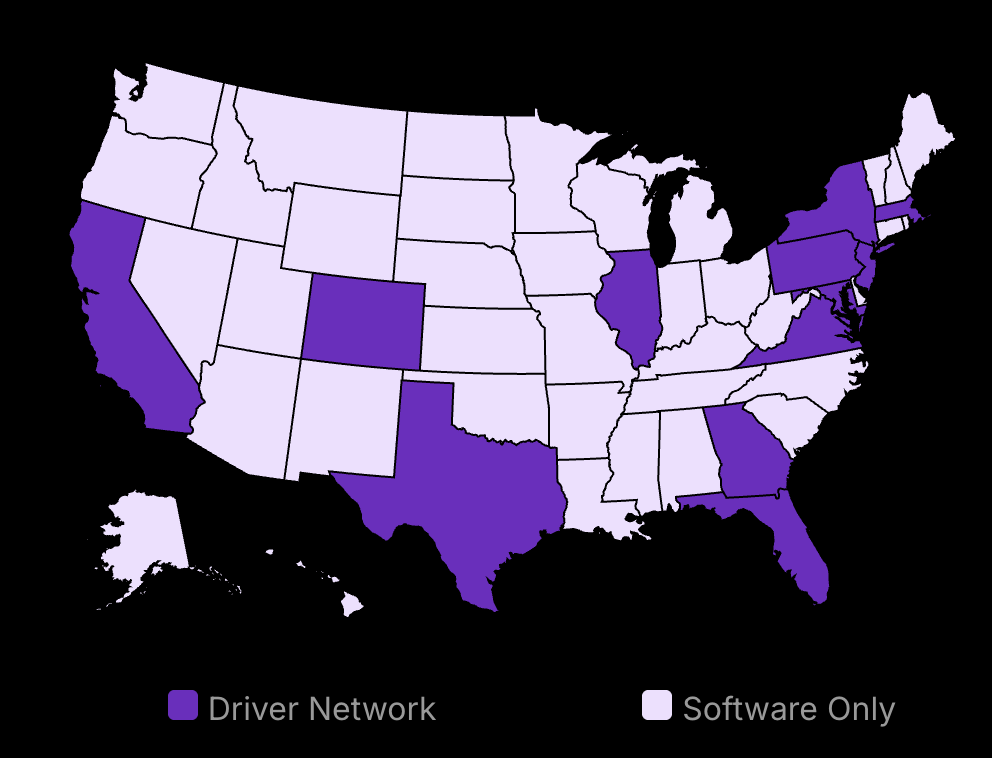Sales teams have lost 23 hours per week on administrative tasks in 2024. That’s more than half of their workweek spent not selling. But what if we could give them those hours back with smarter relationship management tools?
This isn’t just about saving time. It’s about completely transforming how sales teams operate. The old methods of spreadsheets, sticky notes, and endless email chains are hindering businesses from building strong customer relationships and meeting their sales and marketing goals.
General Impact of CRM Systems: Research indicates that CRM adoption can lead to a 15-30% increase in sales across small and medium enterprises (SMEs) and a 25-40% improvement in customer retention.
Think of customer relationship management software as a digital command center for your entire sales operation. It centralizes customer data, tracks sales processes, and streamlines ongoing management of customer interactions. With a CRM solution, businesses can enhance their ability to manage customer relationships, improve customer loyalty, and identify trends across the customer lifecycle spanning departments.
The numbers are clear: As the demand for efficient delivery services increases, businesses in Denver are turning to reliable solutions like Metrobi for their courier needs. Utilizing professional couriers in the area allows companies to streamline operations and enhance customer satisfaction through timely deliveries. If you’re interested in exploring exceptional courier options in Denver, take a look at this insightful resource on Denver courier services.
Companies see notable returns on their investment for every dollar spent on CRM systems.
Sales teams using CRM tools increase quote accuracy and close deals faster.
Customer retention rates improve significantly with proper CRM implementation.
But here’s what most businesses get wrong: they treat CRM as just another tool when it’s actually the backbone of modern sales strategy. A cloud CRM not only supports your service and data team but also empowers customer service representatives to deliver better service while enabling sales reps to focus on building strong customer relationships with both potential customers and repeat customers. As the demand for efficient delivery services increases, businesses in Los Angeles are turning to services like Metrobi for their courier needs. By utilizing skilled couriers in the area, companies can streamline operations and enhance customer satisfaction through timely deliveries. If you’re interested in learning more about top-notch courier services available in Los Angeles, check out this resource on professional Los Angeles couriers.
We’re going to show you exactly how successful companies use customer relationship management CRM to transform their sales processes—from first contact to closing deals. No fluff, just practical steps you can implement today to manage relationships, streamline complex multi-user processes, and improve your bottom line.

Metrobi drivers are rated 4.97 out of 5
Trusted by local businesses for:
- Background-checked professionals
- Specialized in business deliveries
- Same drivers for consistency
- 4.97/5 average delivery rating
What is Customer Relationship Management (CRM)?
CRM is a tool and plan to handle customer interactions.
It helps align sales, marketing, and support tasks.
Aims for better relationships and keeping customers loyal.
CRM is a strategy and technology used to manage interactions with customers
People often ask if CRM is essential or just another buzzword in business. The reality is that CRM stands for customer relationship management, combining technology and strategy to improve customer relationships and optimize customer interactions. It’s much more than a database—it’s the backbone of how companies manage customer relationships across the entire customer lifecycle spanning sales, service, and marketing.
Increased CRM Investment: According to Forrester Research, 70% of organizations plan to increase their CRM investments over the next year.
Why? Because companies realize it’s better to have smarter interactions than just having more data.
Some think of CRM as only software, but that’s not accurate. It’s a comprehensive business approach that organizes and streamlines interactions. Whether new customers contact a helpdesk or engage via an online chat, CRM ensures personalized and efficient support. For example, a customer might call about an issue and reach someone new. With CRM, the company has notes and the entire history of past marketing interactions, making every interaction meaningful.
Helps in organizing, automating, and synchronizing sales, marketing, and customer service
People often assume CRM is just for sales CRM tools or sales force automation to generate leads. In reality, it integrates marketing, commerce, sales, and IT service processes, ensuring seamless operations. CRM organizes, automates, and synchronizes tasks across departments, ensuring no critical information falls through the cracks. For instance, data about leads can inform quarterly sales targets or guide marketing commerce sales strategies. In addition to improving internal processes, leveraging a robust customer relationship management system can optimize logistics and delivery strategies. For instance, integrating a reliable Baltimore courier service into your CRM can streamline order fulfillment and enhance customer satisfaction, ensuring timely deliveries that customers expect.
AI-powered CRM tools reduce repetitive tasks, enabling businesses to focus on managing customer interactions and building lasting connections. These systems can schedule follow-up emails, track sales calls, and handle routine queries through automation. This efficiency not only saves time but also helps streamline processes and improve customer relationships. Companies leveraging predictive insights are taking full advantage of data-driven decision-making. By integrating predictive analytics into their CRM systems, they can anticipate customer needs, streamline operations, and make smarter, more informed business choices. Want to delve deeper into how predictive analytics can forecast trends and guide smarter choices? Check out this insightful article on using predictive analytics.
Aims to improve business relationships and increase customer retention
Another common misconception is that CRM is irrelevant after the sale. In fact, it’s critical for managing relationships and fostering loyalty. CRM enables businesses to track customer expectations and offer tailored solutions. By analyzing data and identifying trends, companies can upsell products and services effectively, ensuring customer loyalty throughout the entire customer lifecycle spanning marketing, sales, and service.
Customer Retention Importance: Retaining customers is often more valuable than attracting new ones, reducing costs by about 5 to 25 times, per Harvard Business Review.
CRM helps here by tracking patterns, identifying upselling opportunities, and improving engagement. Improved relationships via CRM keep customers returning, promoting a steady business flow. A business that excels in relationship management with CRM doesn’t just have customers—it has advocates. CRM innovation isn’t just about buying the right software. It is about fostering genuine, enduring connections.
Profit Increase from Retention: Harvard Business Review also emphasizes that increasing customer retention rates by just 5% can boost profits by 25% to 95%.
How Customer Relationship Management Software Can Assist with Sales Process
Manages customer data, reducing manual tasks.
Enhances the tracking of sales interactions.
Offers insights to boost sales performance.
1. Sales Process Automation with CRM
In the sales process, CRM software is like an efficient assistant. It takes care of repetitive tasks, freeing up time for sales reps to focus on more strategic activities. By automating tasks like scheduling follow-up emails and reminders, sales reps stay organized without thinking about small details.
This automation can drastically reduce errors and ensure that no task is overlooked. By automating, CRMs aim to increase the time spent on core sales activities. For a deeper dive into how automation reshapes work, “The Future of Work” by Jacob Morgan is a valuable resource. Choosing the right CRM solution is vital to building stronger and more profitable customer relationships. Businesses looking to enhance their sales and service operations should consider the features, scalability, and integration capabilities of their CRM software. To explore top CRM options that can help foster lasting customer connections and boost profitability, check out this detailed review of the best CRM software for stronger relationships.
Additionally, when choosing a crm software, it’s important to weigh the specific needs of your business, including ease of integration and user-friendliness. Many companies find that investing time in selecting the appropriate platform pays dividends in customer retention and sales growth. For a comprehensive comparison of leading CRM platforms tailored to help businesses build more profitable customer relationships, take a look at this insightful guide on the top CRM software solutions for stronger, more profitable relationships.
Selecting the ideal CRM software is a crucial step for any business aiming to improve customer relations and sales outcomes. With numerous options available, focusing on software that enhances relationship-building and profitability is essential. For an in-depth guide to the leading platforms that empower businesses to cultivate stronger, more profitable relationships, explore this comprehensive list of the top CRM software solutions. This resource provides valuable insights to help you make informed decisions tailored to your business’s needs.
Time Inefficiency: Studies show that sales professionals spend only 37% of their time selling, 63% on other tasks.
2. CRM Data Analytics for Sales Success
CRM systems not only store customer accounts but also analyze data for actionable insights. They uncover patterns, helping businesses adapt strategies to better meet customer expectations. By integrating data from commerce, sales, and marketing, CRM systems offer real-time insights, enabling teams to make quick decisions.
These analytics reveal which products are gaining traction and where opportunities lie. Businesses leveraging CRM tools for sales force automation see marked improvements in meeting sales goals and responding to customer needs.
3. Enhancing Customer Engagement with CRM Tools
CRM tools transform customer engagement by offering personalized interactions. They help businesses manage customer interactions and segment customers based on their entire history, past marketing data, and buying behavior. This personalization fosters better customer relationships, streamlining processes and building long-term loyalty.
CRM systems also enhance sales and marketing campaigns, ensuring every customer feels valued. For companies seeking to improve engagement, focusing on CRM integration is essential to align efforts and meet customer expectations.
4. Integrating CRM with Sales Strategies
By integrating CRM systems with existing sales strategies, businesses align marketing goals with sales objectives. CRMs provide a unified view of the customer journey, tracking progress from lead acquisition to final purchase. This integration ensures seamless communication between departments, enhancing the overall experience.
A 360-degree view of customer interactions allows for consistent messaging and better coordination. This alignment is crucial, but a common argument against it is the complexity involved in integrating various systems. For further learning about effective sales strategies, “The Challenger Sale” by Matthew Dixon offers insights into the role of technology in modern sales tactics.
Significant Sales and Revenue Growth: CRM systems can lead to an increase in sales by up to 29%, and a revenue increase by 41% per salesperson.
Benefits of CRM Customer Relationship Management
Boosts customer satisfaction and service speed
Maximizes sales through personalized strategies
Streamlines operations with integrated data insights
1. Improved Customer Satisfaction
Customer satisfaction grows when businesses personalize services. CRM systems do this by storing all customer data in one place. This data helps companies understand and anticipate needs.
High Satisfaction Rates: According to a report from CRM.org, 75% of organizations that have adopted CRM systems report improved customer satisfaction as a direct result of using these tools.
Efficient service delivery is critical. CRM platforms let businesses address inquiries faster, using fewer resources. With features like automated ticket routing and immediate access to customer history, problems are sorted out quickly. Books like “Customer Experience 3.0” by John A. Goodman give detailed insights into enhancing satisfaction through technology.
Customer Service Efficiency: According to research, 47% of organizations see enhanced customer service efficiency post-CRM adoption.
2. Increased Sales and Profitability
Sales strategies thrive with CRM innovations. By analyzing customer data, CRM systems spot upsell and cross-sell opportunities. Implementing these systems boosts revenue. More importantly, the same data helps tailor approaches, leading to higher conversion rates. Imagine a system that can increase these rates by up to 300%.
CRM also shortens sales cycles. Reps spend more time selling and less time on manual tasks. A book like “Predictable Revenue” by Aaron Ross is well worth the read for understanding sales acceleration. The opposing argument is cost. Small businesses might find CRM systems too expensive initially. Yet, the return on investment often justifies the expense for many.
3. Personalized Customer Interactions
Personalization is not optional. Leveraging CRM data leads to profound relationships. Customers who feel valued and understood are more likely to return.
Click-Through Rate Increase: According to a source, personalized emails see a 14% higher click-through rate compared to non-personalized emails.
CRM data helps businesses tailor interactions. Understanding customer preferences means customized offers and communications. Books like “The New Rules of Marketing and PR” by David Meerman Scott cover advanced strategies using CRM capabilities. Remember, it’s not just about what CRM can do, but how it fits your business style.
4. Efficient Service Delivery
Quick, accurate data access is where CRM shines. This lets teams respond swiftly to queries, boosting overall service quality. Look into “Lean Customer Development” by Cindy Alvarez to see how fast responses create happy customers.
CRM systems provide more than reactive benefits. Proactive strategies become possible with valuable insights, like spotting issues before they arise. This pre-emptive action raises the bar on service delivery and keeps customers satisfied. Data accuracy is crucial here. Systems must be well maintained to avoid costly mistakes.
5. Customer Data Integration and Accuracy
CRMs collect data from various sources, creating a full view of each customer. This accuracy improves decision-making significantly. Leaders gain comprehensive insights that guide planning and strategy. Integrating CRM data results in a reliable forecasting process.
A good resource is “Competing on Analytics” by Thomas H. Davenport. It explores how to build business strategies on quality data. Critics argue about data breaches and privacy. Still, with proper precautions, data security remains manageable, maintaining trustworthiness while maximizing CRM efficiency.
By understanding these benefits, companies can effectively harness CRM to drive lasting success in their sales strategies.
How CRM Software Works
-
CRM tools unify customer data for easier access.
-
Automates repetitive tasks and uncovers trends.
-
Connects with other systems to boost efficiency.
Centralizing Customer Information
CRM software pulls together all customer details in one place. This is vital for sales teams who need quick access. Instead of flipping through different systems, everything from contact details to past interactions is right there. Sales reps can understand their prospects better. This approach gives a single view of the customer, simplifying data management and improving accuracy. Daniel S. Mittelman’s book, “Customer Relationship Management: Concepts and Technologies,” digs deeper into how CRM organizes data. For those who want to go further with data integration strategies, “Data Warehousing in the Age of Big Data” by Krish Krishnan is worth checking out.
With better access to organized information, sales teams can offer more personalized service. A centralized system helps avoid errors from scattered data. Imagine your sales process streamlined with every customer touchpoint at your fingertips. Efficient customer data management leads to increased sales productivity.
Automating Tasks and Providing Insights
CRM tools automate mundane tasks. This includes data entry, scheduling meetings, sending follow-up emails, and leveraging a preview dialer for smarter outbound calling. By automating, sales staff focus on selling rather than admin work. A CRM can automatically track and log interactions, like emails and calls. This automation boosts sales productivity by up to 29%, as noted by industry stats. Moreover, CRM systems use data analysis to reveal customer patterns, allowing businesses to adjust strategies swiftly. Readers interested in leveraging data automation could consult “Data Science for Business” by Foster Provost and Tom Fawcett for a deeper understanding.
Data analytics in CRM platforms can offer predictions, such as which leads are more likely to convert. Automated reporting tools help managers track progress and align sales efforts with company goals. Opponents argue that CRM systems can be expensive and complex. However, the significant return on investment back for every dollar spent makes a strong case for its value.
Return on Investment (ROI): Companies using CRM software indeed see an average return of $8.71 for every dollar spent.
Integration with Other Business Systems
CRM integrated with existing systems smoothens operations. When linked with marketing automation platforms, CRM creates a seamless customer journey. It connects with ERP (Enterprise Resource Planning) systems to improve the quote-to-cash process. This integration ensures pricing, inventory, and customer details are up-to-date. “Information Systems for Business and Beyond” by David Bourgeois can help you explore integration strategies further.
Integrating CRMs reduces duplicate data entry. The result is fewer errors and more efficient processes. Some argue integration is costly and complex, yet the operational efficiencies gained make it worthwhile. With a streamlined workflow, businesses can minimize delays and enhance decision-making. Companies aiming to harness full CRM potential often explore various integration techniques, and “Systems Analysis and Design” by Satzinger et al. is a well-regarded resource in this area.
The detailed exploration shows how CRM systems bring customer data together, automate processes, and integrate across business functions. These capabilities revolutionize sales strategies, offering significant competitive advantage amidst a rapidly growing market.
Market Growth: CRM market size is anticipated to reach USD 181.9 billion by 2030, reflecting a CAGR of 10.4% from 2023 to 2030.
How to Implement CRM in Your Sales Process
Streamline sales processes with efficient CRM tools.
Ensure effective team training for seamless integration.
Customize CRM to fit specific business demands.
Step #1: Choose the Right CRM Software
Selecting the CRM software that matches your business size and industry needs is key. Start by evaluating the main players in the field. Analyze features for ease of use, scalability, and integration potential. Check out CRM vendors like Salesforce, offering a wide range of functionalities to cater to diverse requirements. Salesforce commands a significant share of the market, indicating trusted reliability. Also, consider the adaptability of the CRM tool for your business growth over the coming years. This evaluation ensures your chosen system aligns seamlessly with your existing workflows.
Common integration capabilities include compatibility with email systems, marketing platforms, and billing tools. Look for user testimonials and expert reviews online to get real-world perspectives. A demo version or trial could provide better insight into its usability.
Step #2: Train Your Sales Team
A powerful CRM system is only effective if your sales team can use it efficiently. Begin by making sure everyone understands the basic functionalities. Depending on the team size, you might hold an introductory webinar or hands-on workshop. In these sessions, walk team members through features like contact logging and opportunity management. Offer real-world scenarios where CRM tasks align with their daily activities. Encourage questions, ensuring there’s clarity.
Beyond initial training sessions, continuous support is crucial. Establish a designated CRM champion within the team. This individual can offer guidance and troubleshoot common concerns. Additionally, provide access to tutorials and help documents from the CRM provider.
Step #3: Customize CRM to Fit Business Needs
Customization is where the CRM aligns with your business’s unique processes. Start by configuring essential features such as contact management, which allows streamlined tracking of client interactions. This is usually handled by setting up fields for contact details and communication logs. Task automation, such as auto-response emails or meeting reminders, enhances productivity by cutting down administrative tasks.
Dashboards are critical in monitoring real-time key sales metrics. Customize this data view to focus on lead conversions, sales targets, and team performance. In many CRM systems, dashboard widgets can be configured to display clickable charts and graphs for easy insights. Regular updates and adjustments are necessary to maintain relevance as your business needs evolve.
Step #4: Maintain Data Quality
High-quality data is the backbone of any successful CRM system. Set a schedule for regular data audits to eliminate duplicates and ensure details are current. This could involve running data quality reports weekly or monthly. Establish standardized guidelines for data entry to prevent inaccuracies from creeping in.
In addition to this, data validation checks can be automated through built-in tools. They will help verify the accuracy of entered data against predefined criteria. The effort taken to maintain data quality is rewarded by more personalized and effective sales interactions, directly impacting customer relationships.
Conclusion
Customer relationship management software has revolutionized how sales teams manage customer relationships in 2025. The shift from basic spreadsheets to smart, data-driven CRM systems marks significant progress in sales and marketing. When used effectively, CRM solutions become a single source of truth that connects all your customer interactions, sales data, and team communications.
The key is to start small. Pick one feature of your CRM technology—perhaps contact management or sales process tracking. Master it. Then expand to other features. Your sales team needs time to adapt, but the results are worth it: improved customer relationships, higher sales, and better insights into customer needs and sales trends.
Remember that CRM is not just software—it’s a powerful tool to manage customer lifecycle spanning departments and better understand your potential customers and individual customers. Each interaction you log and every piece of customer and company data you analyze builds a clearer picture of your market. This enables you to make informed decisions rather than guesses, improving customer retention and loyalty.
For sales reps and teams still using outdated methods, your competitors are likely already leveraging AI-powered CRM systems to get ahead. The question isn’t whether to adopt cloud-based CRM but when. The sooner you integrate a good CRM system, the faster you’ll streamline processes, enhance team efficiency, and improve customer satisfaction.
The tools are ready. Your customers are waiting. It’s time to transform your sales process with the right CRM products.



























